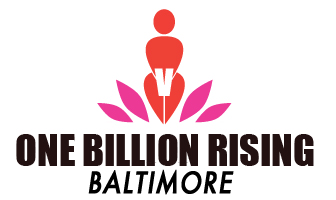Patterson Park is one of Baltimore’s fastest growing neighborhoods, and it’s all due to a water ballet. Yes, there was a neighborhood association and other revitalization efforts ongoing at the time, but Will Backstrom credits Fluid Movement‘s 1999 performance with being the key turning point, one that “changed the impression of the park from a sketchy, dangerous place to a place where these funky, cool things happen.”
Backstrom, who worked for the Park Neighborhoods Initiative at the time, is now PNC’s Vice President and Territory Manager in Community Development Banking, and is building on the lessons he learned in Patterson Park. “Layering the inspiration of the creative class on these revitalization efforts makes the difference,” says Backstrom. While other community efforts focused on fixing neighborhood nuisances, the water ballet and its instigators challenged the stigma of urban parks by its mere presence and offered a new narrative of an imaginative, fun—and, yes, funky—place.
It was intriguing to hear Backstrom’s recollection of Patterson Park in part because I’ve only been in Baltimore since 2003 and, for me, that neighborhood has always had an aura of true Baltimore funkiness about it. It seems like the Creative Alliance has just always been there with its perfect mix of kids’ programming, eclectic music and burlesque; in fact, the organization isn’t even twenty years old yet. I have, however, been around long enough to see Station North transformed. When photographer Linda Day Clark started documenting its residents for her series “The Beauty of North Avenue” in the early 1990’s, she was warned away from even setting foot there:
Everybody said ‘Don’t go there, you’ll die, there’s crime and drugs and violence.’ And I realized I was already living here!” Clark recalled to The Baltimore Sun. “It sounded like a great challenge, you know, because if they were so afraid of North Avenue, then they must be afraid of me, too. So there was obviously some sort of misconception going on. That’s when I thought, ‘Let me just try to walk around and show the humanity here, that there are so many decent, everyday people here.'”
Today, Station North is home to an outstanding array of arts organizations and venues, a pub that hosts traditional Celtic music sessions and a restaurant that’s been featured on the Food Network. Last fall, it celebrated its tenth anniversary as the city’s first designated arts neighborhood and this year neighborhood anchor The National Great Blacks in Wax Museum celebrates its thirtieth.
Aware of the layering of arts and revitalization going on in Station North, Backstrom was instrumental in last year’s Open Walls public art project (PNC provided 76 percent of the project’s funding) and is proud of how it drew positive attention to the neighborhood and Baltimore, citing coverage in The New York Times and The Washington Post.
PNC’s Transformative Art Project grants are an effort to provide funding for similar neighborhood-based collaborations that result in projects that are “different, highly visible and impactful,” underwriting gargantuan fruit in Hamilton/Lauraville, A “Sunflower Village” in Franklin Square and a herd of pastel elephants in Greater Mondawmin. While the application for funding asks communities and their collaborators to describe the impact of their project in transforming their neighborhood, when confronted with my quest for metrics Backstrom admits neither he nor grantees are at the point of quantifying that impact.
“I think this concept is so new that people haven’t had time to think about it yet,” says Backstrom. “If we had numbers, people might not even believe the numbers right now.” He also suggests that, given his experiences in Patterson Park and the challenges he knows Station North still faces, it’s more important to show an investment in a place and to promote it than to demand metrics in the program’s first year. “We’re slowly changing perception and feelings, and this provides an organizing activity to generate a positive sense of place.”
One of the things Backstrom looks for in assessing grantseekers’ projects is how memorable the end result is. “These should be neighborhood landmarks that make you do a double-take and ask, ‘Did I just see that?'” As when Gloria Estefan encountered the tumbling berries in Lauraville and stopped to take a photo:
Baltimore is a BERRY NICE city!! pic.twitter.com/WuR5dO8p
— Gloria Estefan (@GloriaEstefan) July 15, 2012
Admittedly, I went into my meeting with Backstrom expecting a major institution like PNC to have more demanding expectations. But I found his enthusiasm and practicality inspiring, and as someone who’s enjoyed the programming of Open Walls and the unexpectedness of the 2012 Transformative Art Projects, am grateful he’s among those dreaming big about our city, even if, in my hunt for metrics, I was temporarily confounded—though presumably no more confounded than anyone driving down Hartford Road when they suddenly encounter a gigantic carrot.

